Abstract
1. In frog skeletal muscle strontium can replace calcium in potassium contractures for 5 hr, though it is less effective than Ca. Sr can restore the responsiveness to K after it had been lost in the presence of Mn.
2. Muscles refractory to caffeine following repeated exposure to it in the absence of Ca, recover in part following addition of Sr.
3. The uptake of 85Sr was increased during mechanical activity, whereas the uptake of 58Co was not changed. Resting uptake of 58Co was 3-4 times greater than that of 85Sr.
4. Sr fully activated the myofibrillar adenosine triphosphatase (ATP-ase), though its affinity was about 30 times less than Ca.
5. The sarcoplasmic reticulum took up Sr, though less effectively than Ca.
Full text
PDF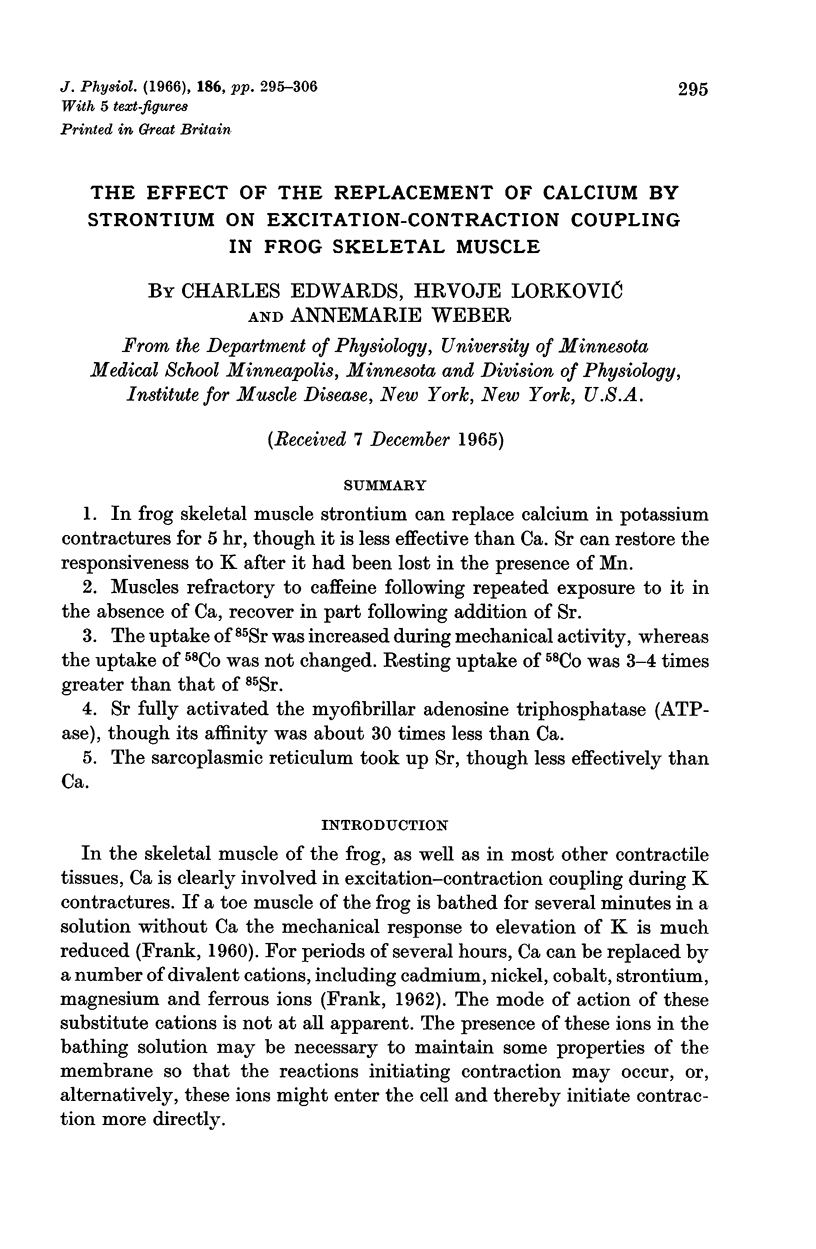
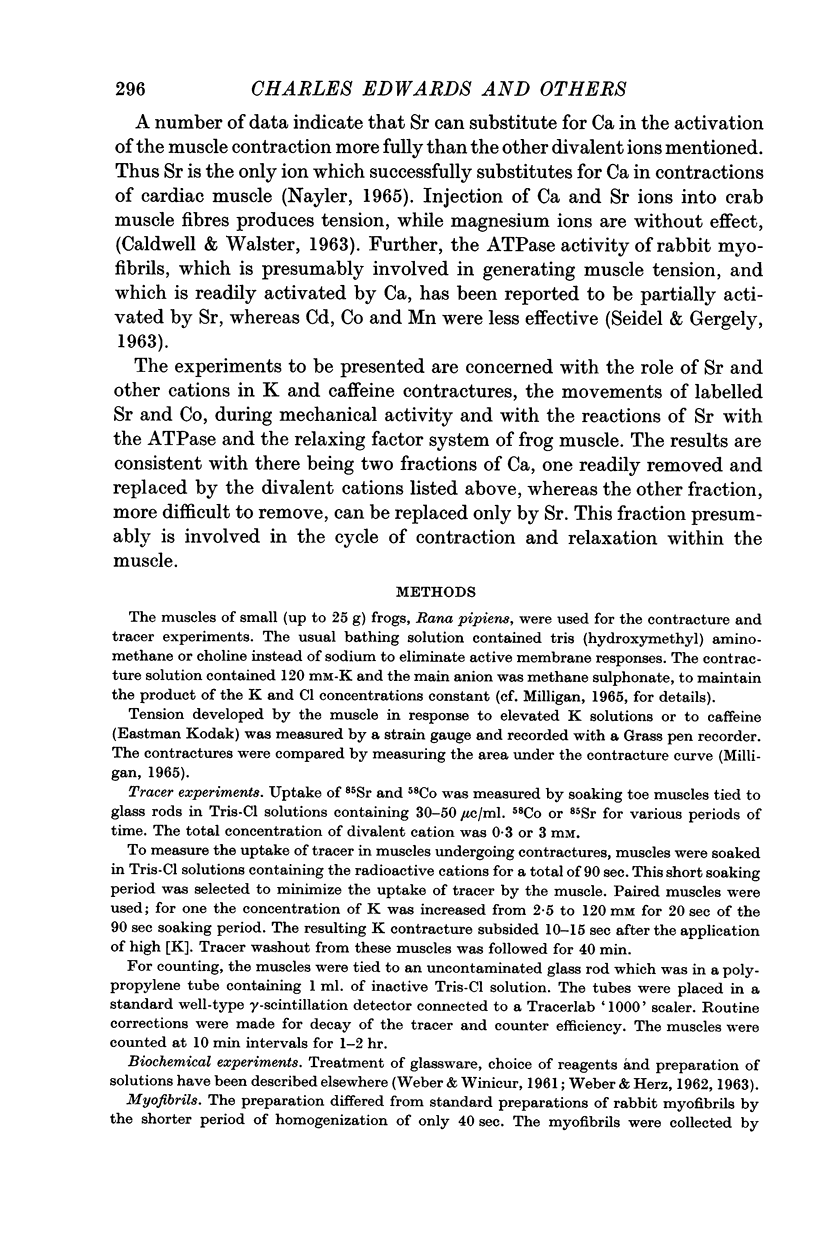
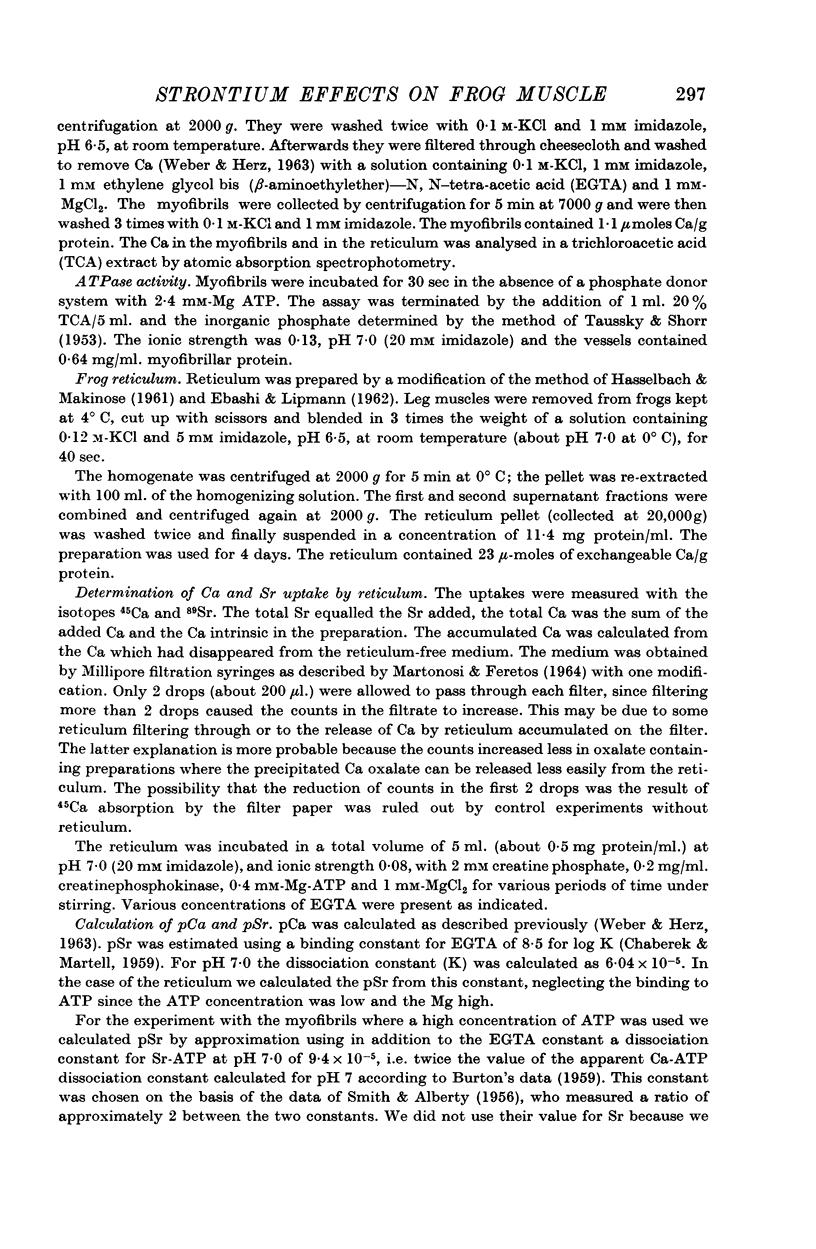
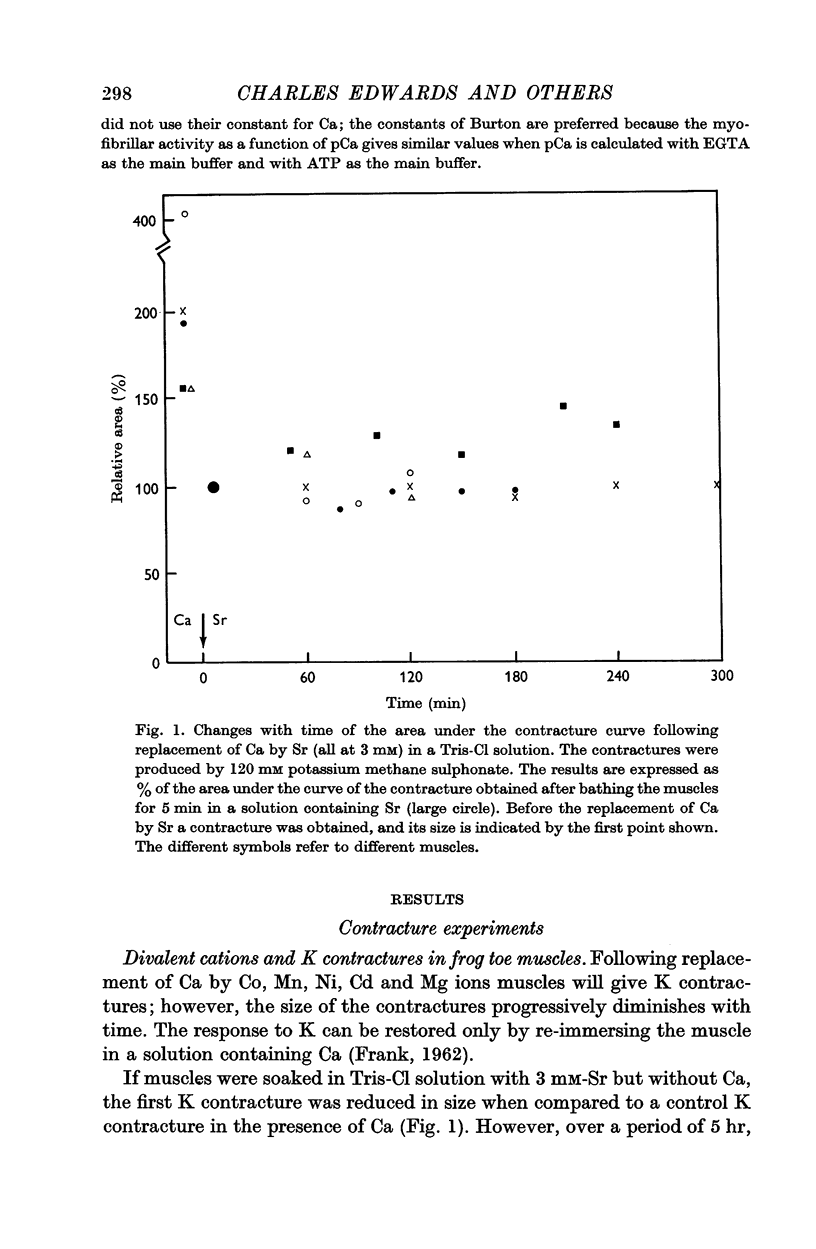
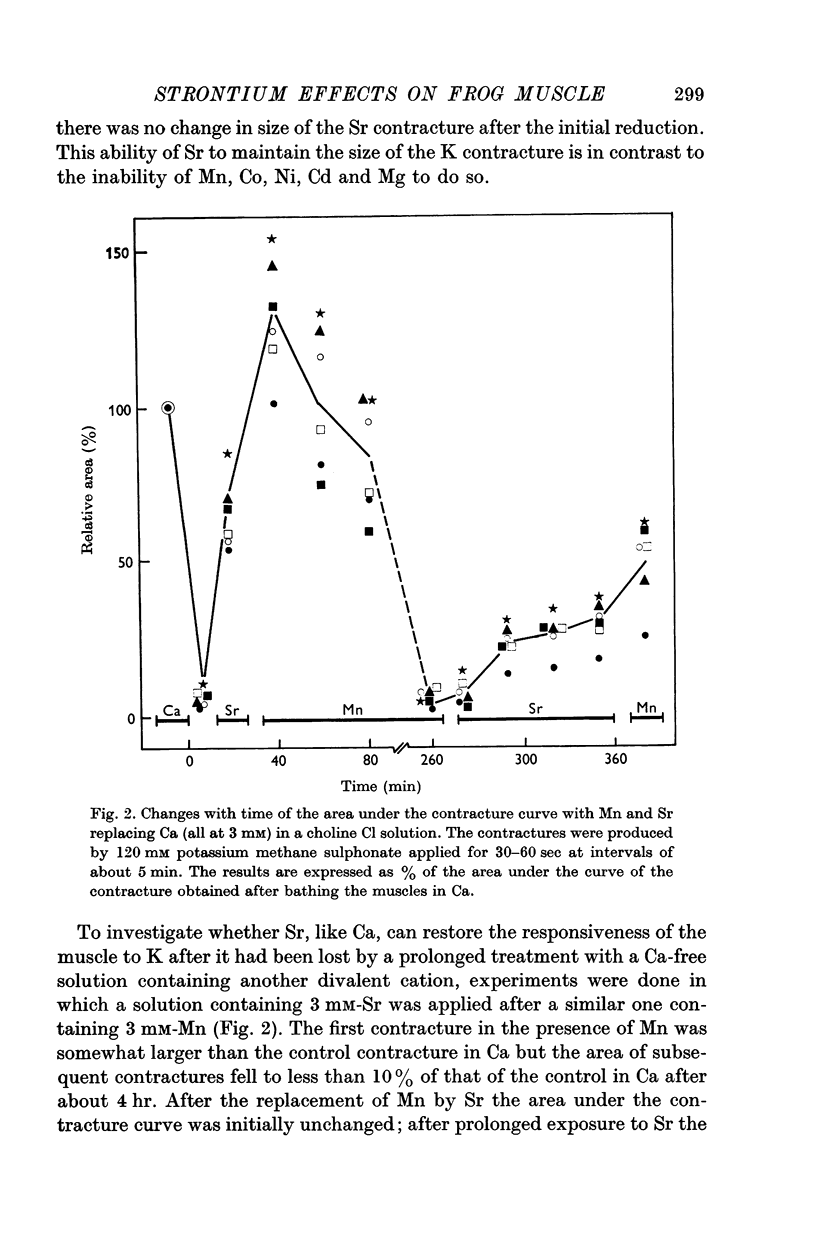
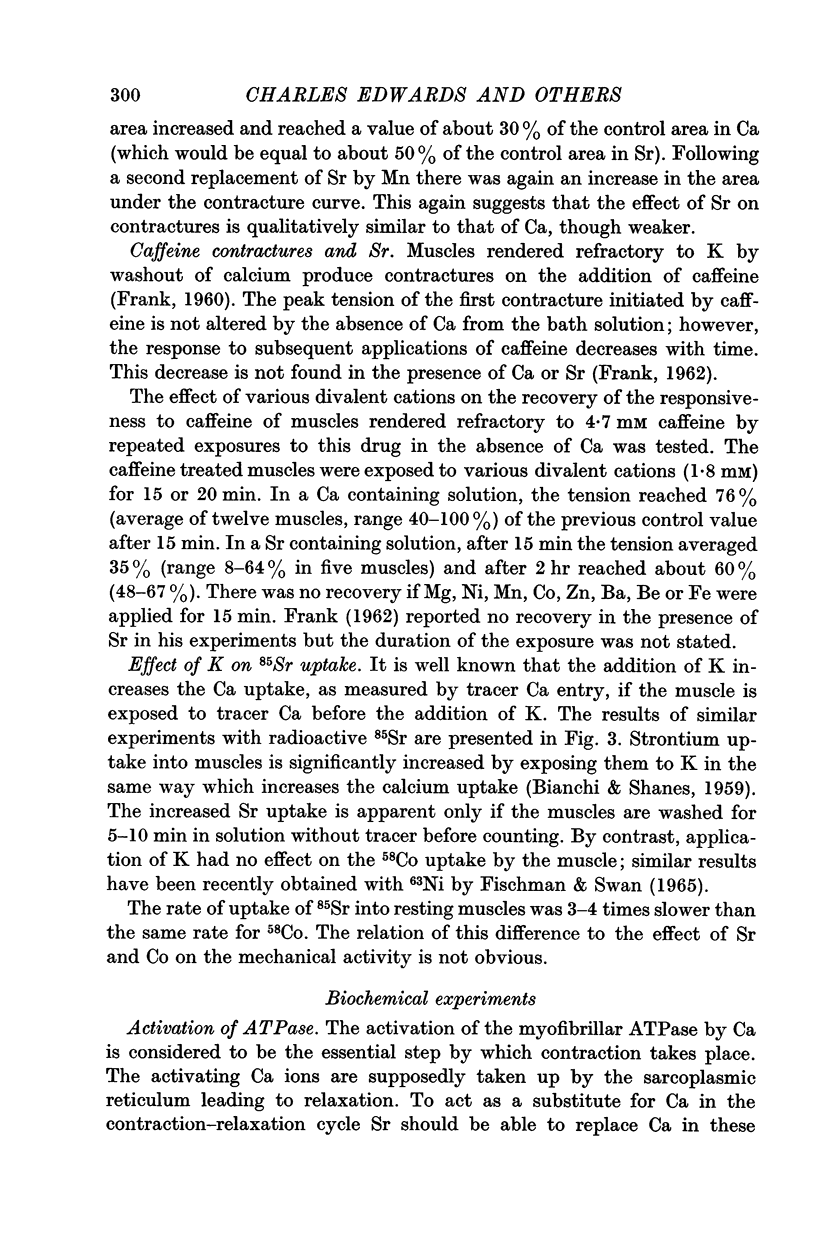
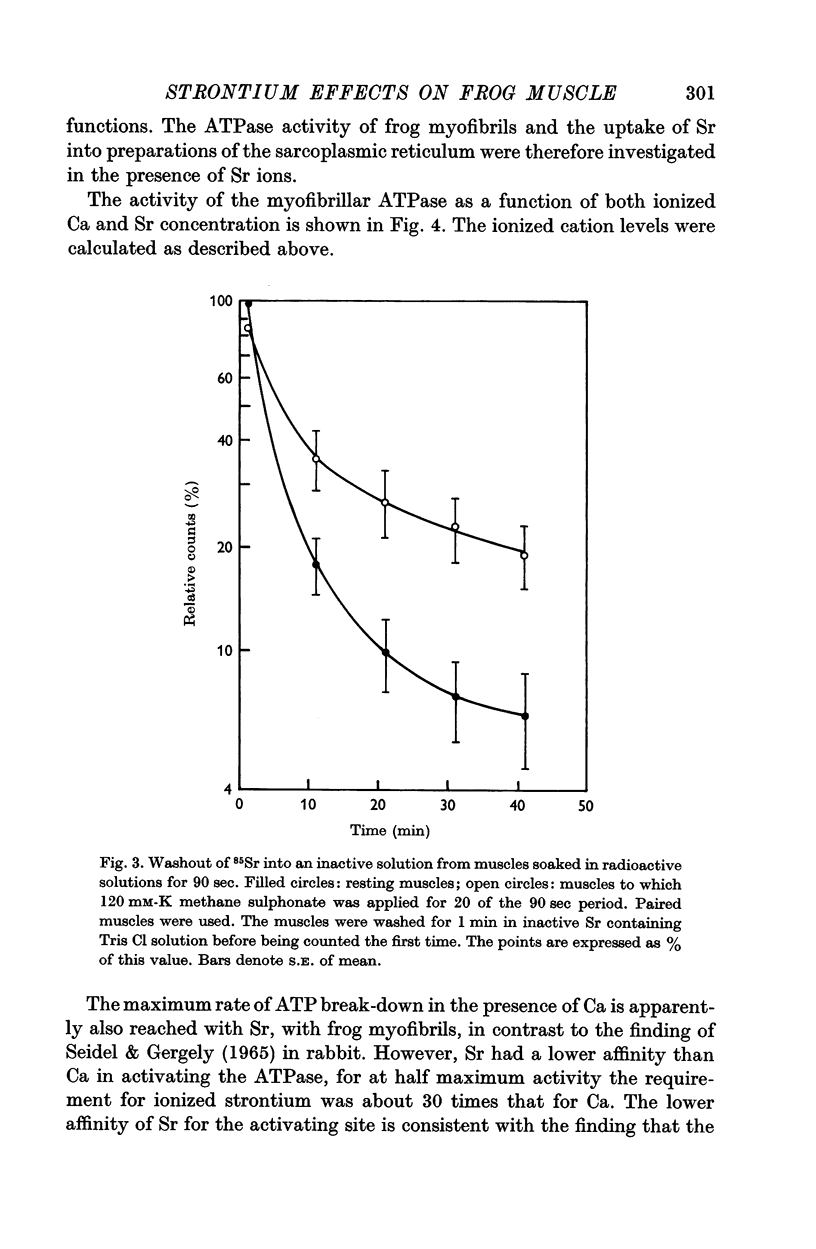
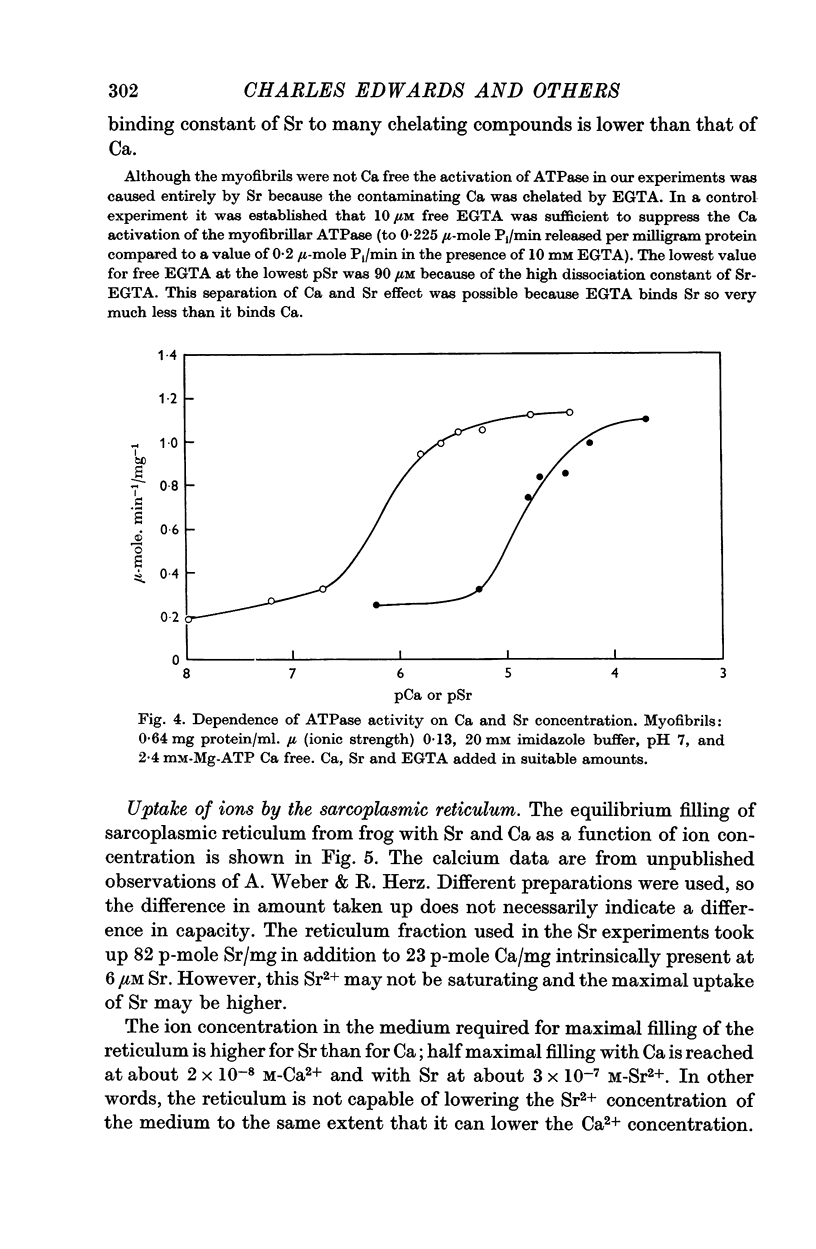
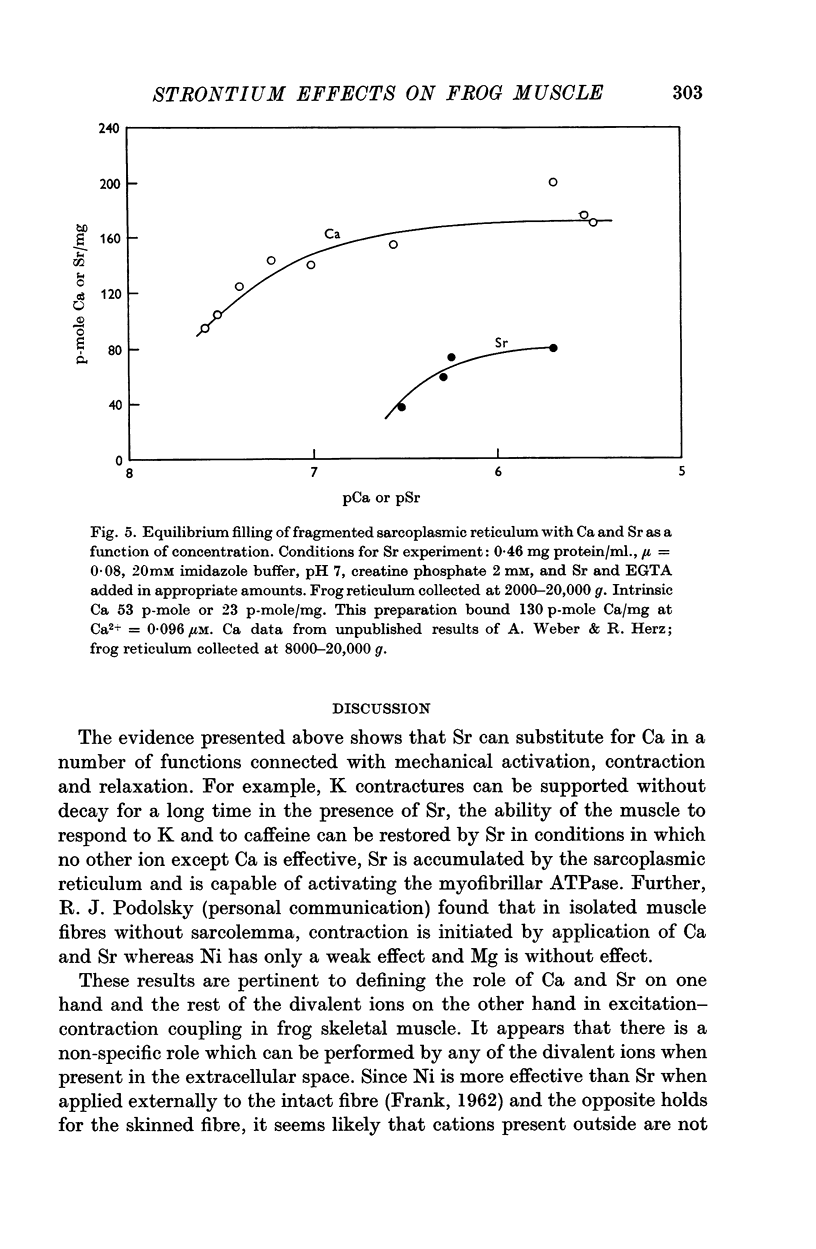
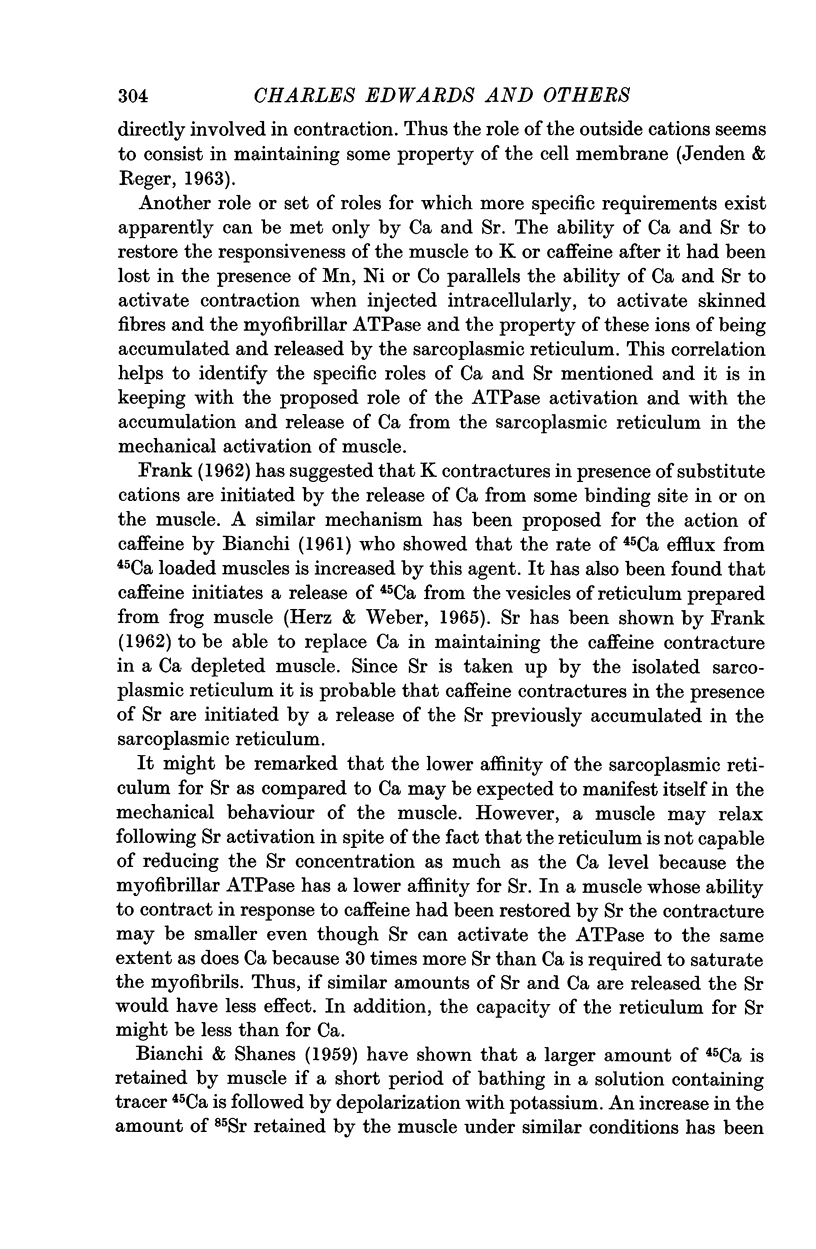
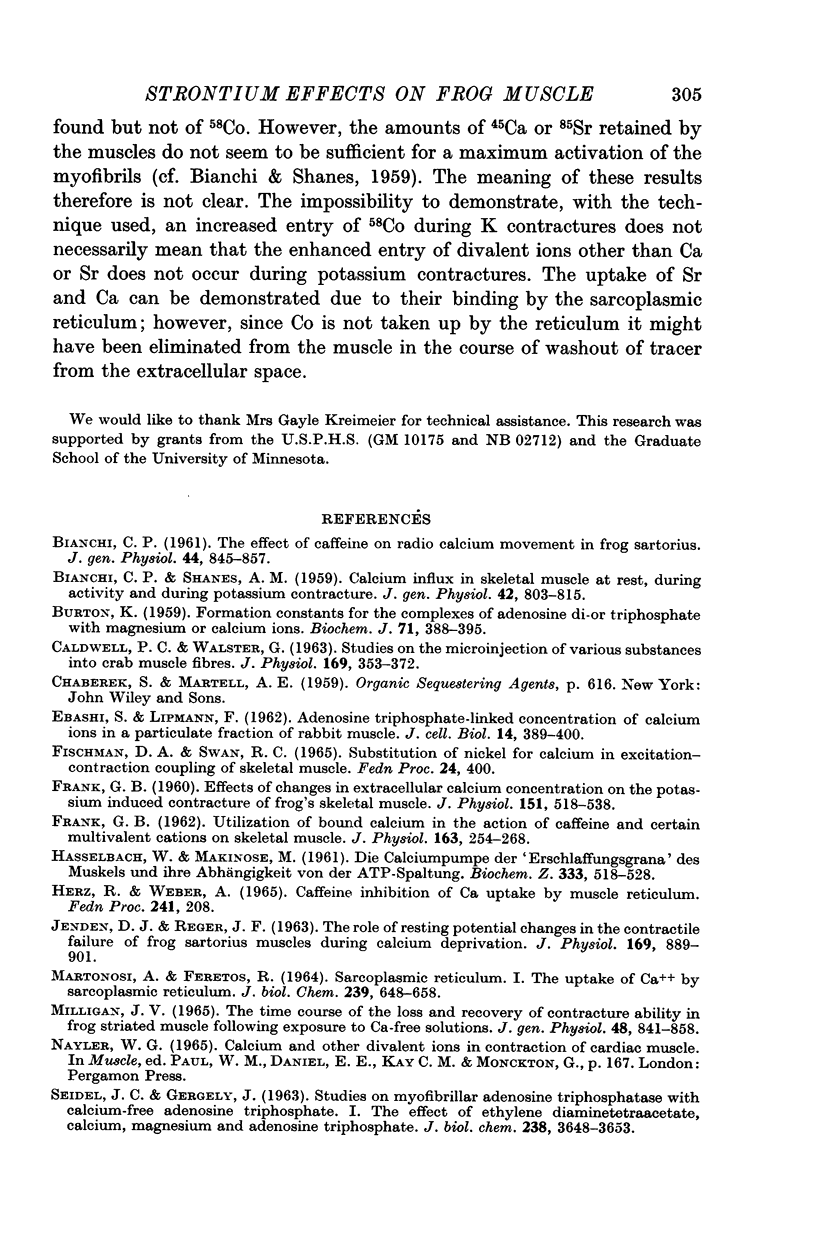
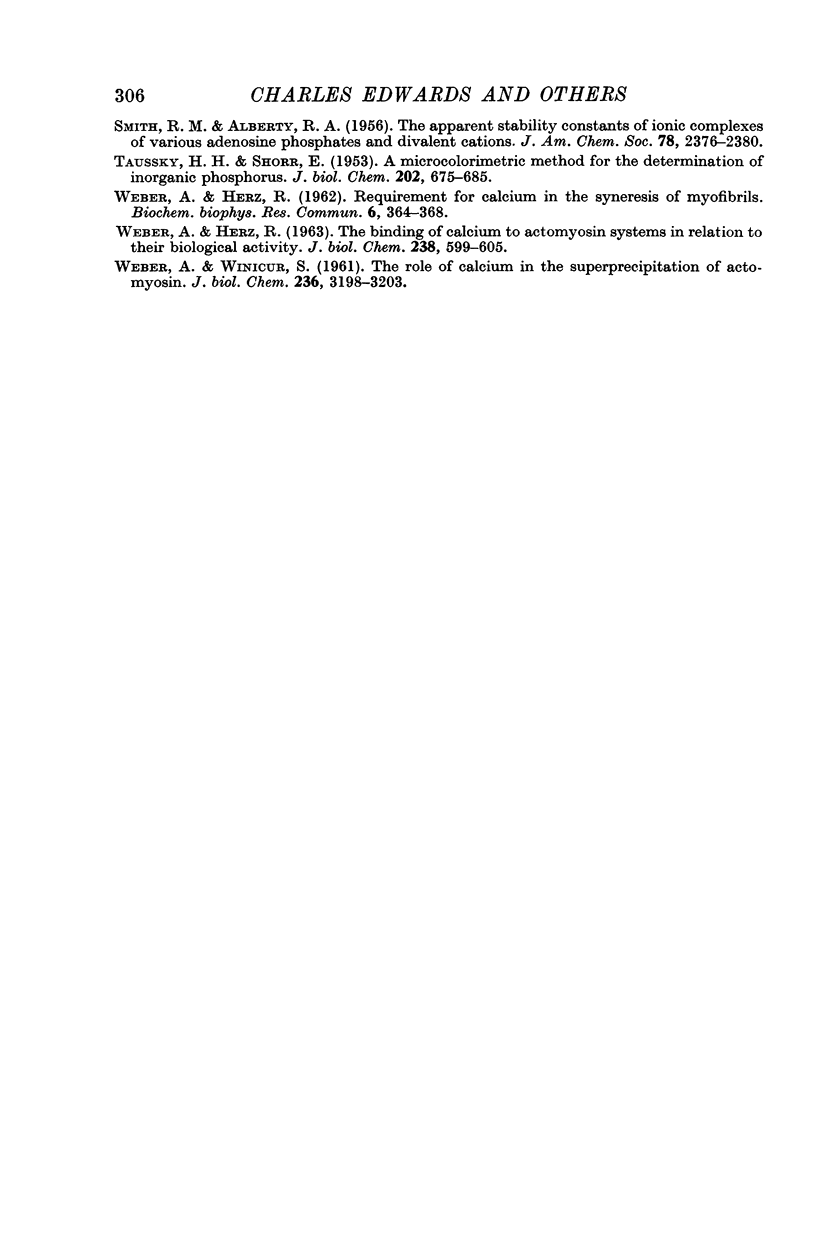
Selected References
These references are in PubMed. This may not be the complete list of references from this article.
- BIANCHI C. P., SHANES A. M. Calcium influx in skeletal muscle at rest, during activity, and during potassium contracture. J Gen Physiol. 1959 Mar 20;42(4):803–815. doi: 10.1085/jgp.42.4.803. [DOI] [PMC free article] [PubMed] [Google Scholar]
- BURTON K. Formation constants for the complexes of adenosine di- or tri-phosphate with magnesium or calcium ions. Biochem J. 1959 Feb;71(2):388–395. doi: 10.1042/bj0710388. [DOI] [PMC free article] [PubMed] [Google Scholar]
- CALDWELL P. C., WALSTER G. STUDIES ON THE MICRO-INJECTION OF VARIOUS SUBSTANCES INTO CRAB MUSCLE FIBRES. J Physiol. 1963 Nov;169:353–372. doi: 10.1113/jphysiol.1963.sp007261. [DOI] [PMC free article] [PubMed] [Google Scholar]
- FRANK G. B. Effects of changes in extracellular calcium concentration on the potassium-induced contracture of frog's skeletal muscle. J Physiol. 1960 Jun;151:518–538. doi: 10.1113/jphysiol.1960.sp006457. [DOI] [PMC free article] [PubMed] [Google Scholar]
- FRANK G. B. Utilization of bound calcium in the action of caffeine and certain multivalent cations on skeletal muscle. J Physiol. 1962 Sep;163:254–268. doi: 10.1113/jphysiol.1962.sp006972. [DOI] [PMC free article] [PubMed] [Google Scholar]
- HASSELBACH W., MAKINOSE M. [The calcium pump of the "relaxing granules" of muscle and its dependence on ATP-splitting]. Biochem Z. 1961;333:518–528. [PubMed] [Google Scholar]
- JENDEN D. J., REGER J. F. THE ROLE OF RESTING POTENTIAL CHANGES IN THE CONTRACTILE FAILURE OF FROG SARTORIUS MUSCLES DURING CALCIUM DEPRIVATION. J Physiol. 1963 Dec;169:889–901. doi: 10.1113/jphysiol.1963.sp007302. [DOI] [PMC free article] [PubMed] [Google Scholar]
- MARTONOSI A., FERETOS R. SARCOPLASMIC RETICULUM. I. THE UPTAKE OF CA++ BY SARCOPLASMIC RETICULUM FRAGMENTS. J Biol Chem. 1964 Feb;239:648–658. [PubMed] [Google Scholar]
- MILLIGAN J. V. THE TIME COURSE OF THE LOSS AND RECOVERY OF CONTRACTURE ABILITY IN FROG STRIATED MUSCLE FOLLOWING EXPOSURE TO CA-FREE SOLUTIONS. J Gen Physiol. 1965 May;48:841–858. doi: 10.1085/jgp.48.5.841. [DOI] [PMC free article] [PubMed] [Google Scholar]
- SEIDEL J. C., GERGELY J. STUDIES ON MYOFIBRILLAR ADENOSINE TRIPHOSPHATASE WITH CALCIUM-FREE ADENOSINE TRIPHOSPHATE. I. THE EFFECT OF ETHYLENEDIAMINETETRAACETATE, CALCIUM, MAGNESIUM, AND ADENOSINE TRIPHOSPHATE. J Biol Chem. 1963 Nov;238:3648–3653. [PubMed] [Google Scholar]
- TAUSSKY H. H., SHORR E. A microcolorimetric method for the determination of inorganic phosphorus. J Biol Chem. 1953 Jun;202(2):675–685. [PubMed] [Google Scholar]
- WEBER A., HERZ R. Requirement for calcium in the synaeresis of myofibrils. Biochem Biophys Res Commun. 1961 Dec 20;6:364–368. doi: 10.1016/0006-291x(61)90146-2. [DOI] [PubMed] [Google Scholar]
- WEBER A., HERZ R. The binding of calcium to actomyosin systems in relation to their biological activity. J Biol Chem. 1963 Feb;238:599–605. [PubMed] [Google Scholar]
- WEBER A., WINICUR S. The role of calcium in the superprecipitation of actomyosin. J Biol Chem. 1961 Dec;236:3198–3202. [PubMed] [Google Scholar]


